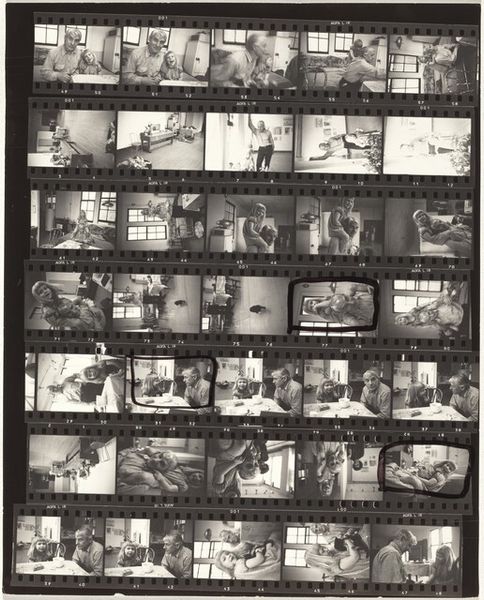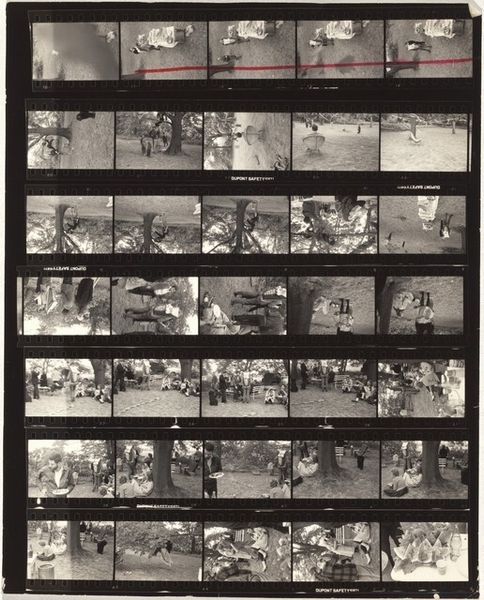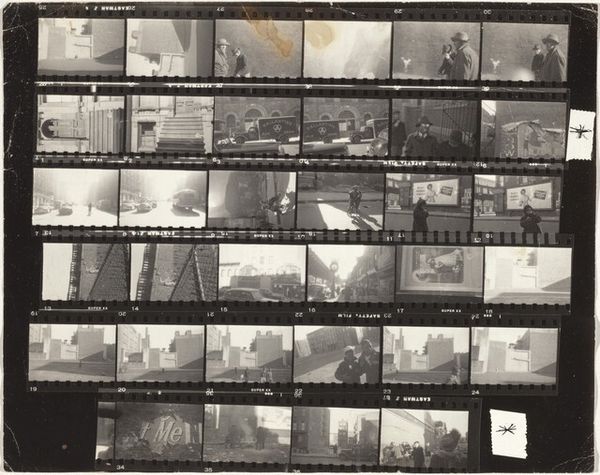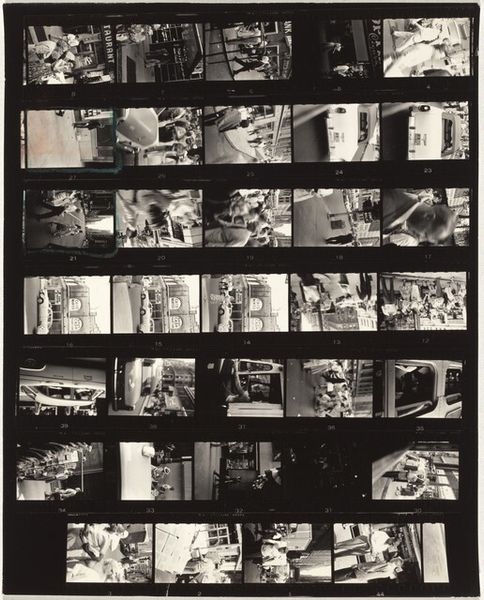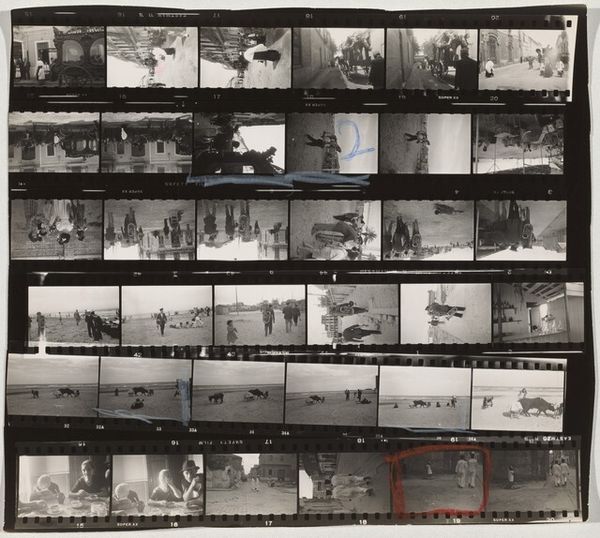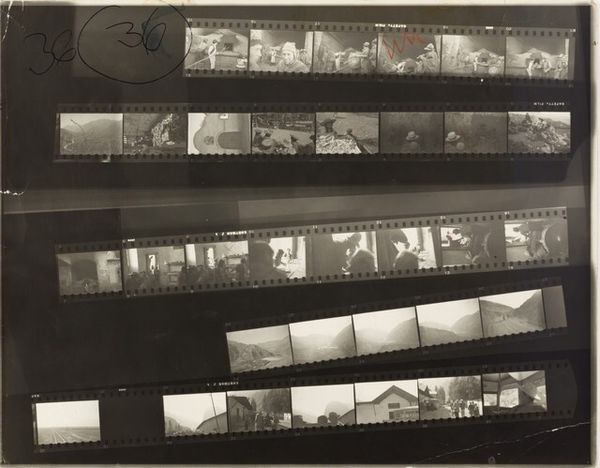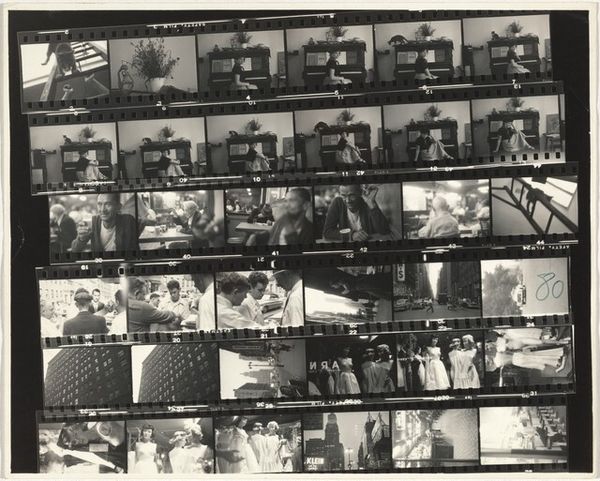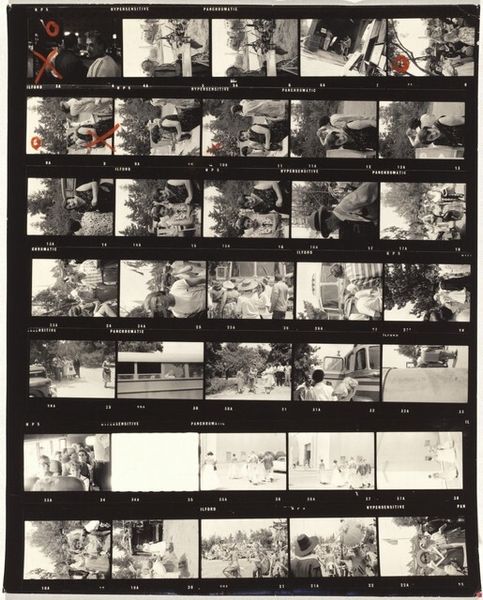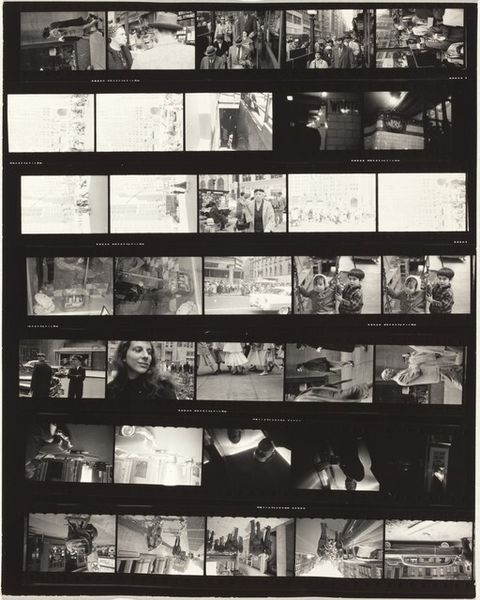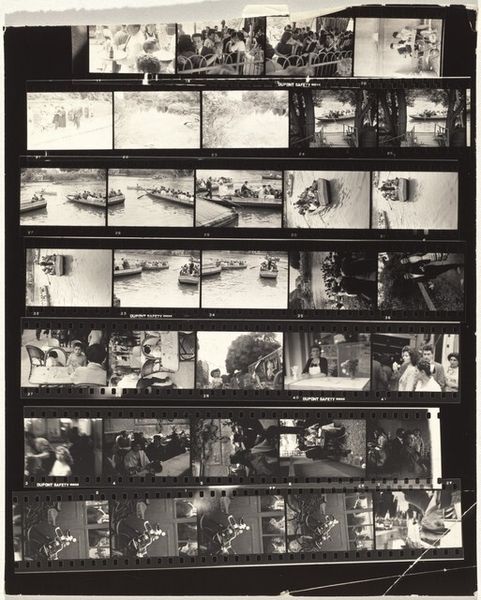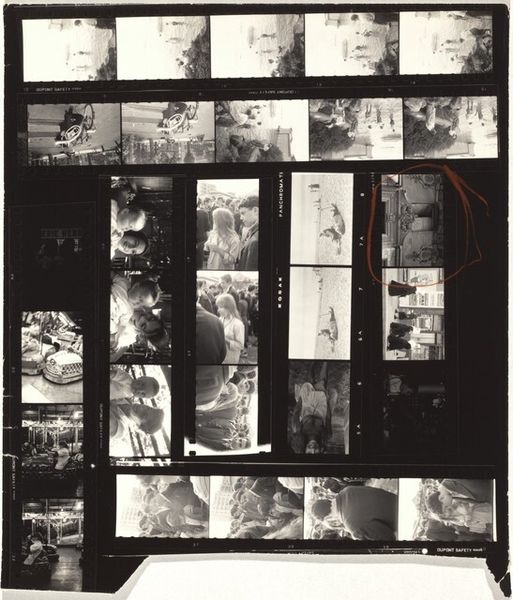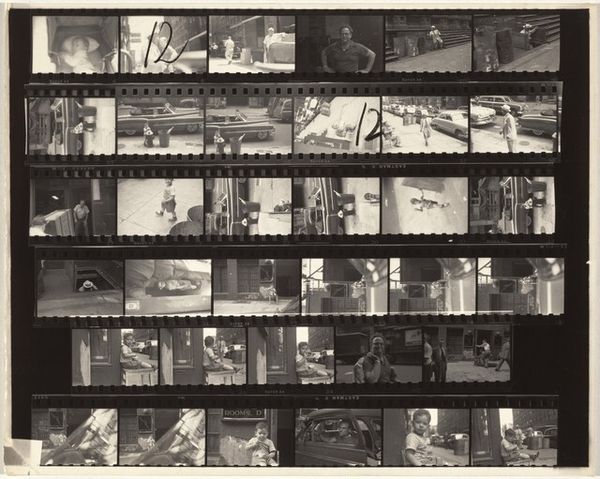
contact-print, photography
#
print photography
#
film photography
#
narrative-art
#
contact-print
#
archive photography
#
street-photography
#
photography
#
monochrome photography
#
pop-art
#
monochrome
Dimensions: image: 21.3 x 26.6 cm (8 3/8 x 10 1/2 in.) sheet: 21.8 x 27.9 cm (8 9/16 x 11 in.)
Copyright: National Gallery of Art: CC0 1.0
Curator: This piece, an Untitled contact print by Jack Smith, offers a fascinating glimpse into street photography and narrative art. Editor: Wow, there’s an immediate, chaotic energy in this photographic document. The dense arrangement of frames really pulses with…life, I guess. It feels like a time capsule. Curator: Precisely! Smith's approach aligns with pop-art sensibilities, capturing a sense of spontaneity. Think about the socio-political context of the era—this aesthetic resonates with the accessibility and democratization of art that was emerging then. Editor: Right, but look at the texture here. It's a contact print, meaning the negative was pressed directly onto the paper. We’re not talking about a pristine, highly produced image. You can practically see the evidence of the artist’s hand. The labor involved. Curator: True, the directness is undeniable. Smith wasn't necessarily striving for perfection. This medium suited his style to engage critically within avant-garde film culture. These are most probably still frames from his experimental films. Editor: Makes you consider the means of production, doesn't it? It makes this feel…raw. Plus, using black and white really emphasizes the gritty nature of the street scenes. It’s a social document that invites close reading. It tells small narratives but there seems to be no real intent behind it. It is just a film contact-print, in the end. Curator: Indeed, it is archive photography in its core! The monochrome enhances the dramatic contrasts, underscoring a stark view of urban life and those who ride the subways. There's a lot to be analyzed, here. It also encapsulates what a specific artistic community would put forward, especially knowing some frames picture Smith himself. Editor: You’re right. Looking at the print as an artifact from his filmmaking, it transforms my interpretation. The filmic quality is embedded in its making and the artistic labor itself. Curator: So, both the social context and material process ultimately enhance how we perceive this art and photography in its broader context. It serves a public role and holds much artistic importance! Editor: I completely agree. Seeing that matrix of frames lets you ponder not just who took this photograph but *how* it came to be, as well.
Comments
No comments
Be the first to comment and join the conversation on the ultimate creative platform.
